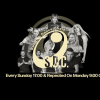-
 play_arrow
play_arrow
Clubalicious Clubalicious Radio
-
 play_arrow
play_arrow
London Calling Podcast Yana Bolder
Classic Tracks: Big Brother & The Holding Company’s “Piece of My Heart”


Like so many of the people who became part of the bedrock of San Francisco’s colorful music scene in the mid- to late ’60s, Janis Joplin got her start in folk music. A couple of years after graduating from high school in the small town of Port Arthur, Texas, where she was an outsider who hung with Bohemian types and was castigated for her support of civil rights, she moved to the University of Texas in Austin and joined a folk/old-time/blues group called the Waller Creek Boys, impressing everyone with her gritty and soulful voice. It was an Austin friend named Chet Helms who convinced Joplin to hitchhike with him to the Bay Area in January 1963 and try to break into the folk scene there. She amazed people everywhere she performed with her heartfelt mixture of blues, folk, gospel and R&B numbers, and she even attracted the interest of various record company types, but her hard-partying lifestyle made her unreliable and unhealthy. By mid-’65, Joplin had returned to Port Arthur to clean up.
Meanwhile, in San Francisco, a lot of the people who had been folkies (including many of Joplin’s friends from her time there) were following the lead of both The Beatles and Bob Dylan, and plugging in and forming bands. Jefferson Airplane, which included guitarist Jorma Kaukonen, who had played folk-blues with Joplin, was one of the first bands to make a splash on the scene in August 1965. By year’s end, there were a number of new bands making waves in what was becoming an increasingly wild and exciting scene, fueled by a combination of youthful enthusiasm and popular “head” drugs of the time, pot and LSD (which was still legal at the time). The Charlatans, the Grateful Dead, the Great Society and Quicksilver Messenger Service were a few of the first wave of bands that played in dancehalls like the Fillmore Auditorium, operated by Bill Graham, and the Avalon Ballroom, which was run by Joplin’s friend Chet Helms.
Helms also served as manager for a group called Big Brother & The Holding Company, which formed in late ’65, and by early ’66 had a solid lineup with two lead guitarists — Sam Andrew and James Gurley — bassist Peter Albin and drummer David Getz. Like most of the first S.F. bands, they played an amalgam of electrified folk tunes, blues and noisy, guitar-driven rock. They were sloppy but spirited — Gurley’s vision was that he wanted to translate some of the raw urgency of John Coltrane and Ornette Coleman onto electric guitar, but he didn’t really have the chops to pull it off. After Big Brother had played the local ballrooms (and other venues) for half a year, Helms dispatched a friend to Texas to talk Joplin into returning to San Francisco and joining the band.
Joplin caused an immediate sensation around town, and her presence vaulted Big Brother to the top echelon of local groups almost overnight. Her spine-tingling performance of Big Mama Thornton’s “Ball and Chain” at the Monterey Pop Festival in June 1967 is widely viewed as the watershed moment in her career — when the music industry first saw what an incredible raw talent she was. But the truth is, the group struggled to make ends meet, and when they signed a very bad deal with Chicago-based Mainstream Records that fall, it was because they were broke and desperate. They cut an album that showed little of her or the band’s feral power, but in a matter of months, they had acquired high-powered manager Albert Grossman to represent them, and Clive Davis and Columbia Records came a-courtin’, signed them to a lucrative deal and brought them to New York to make the classic album Cheap Thrills.
From the outset of her involvement with Big Brother, Joplin had people on the outside telling her that she was better than the band, that she should go solo, etc., but Joplin was fiercely loyal to the group. The dilemma facing Columbia was, how can we take this ragged, trashy, but occasionally glorious band and make an album that will get played on the radio? Rising staff producer John Simon was assigned to work with the band, and the first step, suggested by Albert Grossman, was to try to capture their live energy at the Grande Ballroom in Detroit. Simon, live recording specialist Elliot Mazer and Columbia staff engineer Fred Catero “flew out there along with the portable recording equipment — a recorder [a Scully 4-track] and this large rotary pot board they used when they’d do the Mormon Tabernacle Choir or whatever,” Catero says.
Classic Tracks: John Fogerty’s “Centerfield”
Mazer remembers, “We probably had guitars on one track, drums on the second track, voices on another, maybe bass on the last one. That wasn’t viewed as an impossible thing to do back then. Remotes in those days were ‘get it and get out of there.’ We had some setup and no soundcheck, if I recall. The MC5 [from Detroit] opened the show and [MC5 leader] John Sinclair introduced Janis. I think we did two nights. Originally, when Albert figured that a live album was the way to go with that band, it was set that John [Simon] and I would co-produce everything. But the Grande stuff was only pretty good — and not as good as one needed to make a really good record. Like, the ‘Piece of My Heart’ was okay, but it wasn’t like a produced record, which it needed to be to make a real hit.”
Catero is much less diplomatic: “Janis sounded great but the band was terrible.” (Nevertheless, a number of tracks from the Grande were released later, on Joplin in Concert and the expanded version of Cheap Thrills.)
After that, Mazer says, “They went back to New York and decided to go back into the studio, and I didn’t get involved in those sessions.”
Both CBS in New York and their branch in L.A. (which later hosted Cheap Thrills sessions) had been old broadcast studios originally, with “all-tube hand-built consoles designed by Eric Porterfield, who was the official head of Columbia engineering,” Mazer says. “They had their own machine shops; they did everything. All the studios had very similar boards, some with more inputs, some with fewer; rotary pots and passive equalizers, which are basically like tone controls. Engineers today would die if they saw how few options we had.” The recorders were custom Ampex 8-tracks. Both New York and L.A. had live chambers, and, Mazer says, “because they were former radio studios, the post-production rooms were small — 10×15 or so — with a small console, and a rack on your right as you sat there, and probably some kind of Altec A7 speaker and maybe an Auratone. In those days you probably had an LA-2A, an RCA compressor and maybe a Pultec. And the EQ in the board was a minimal 4-band equalizer.”
Fred Catero is not sure about what mics he might have used on Big Brother. “On an 8-track session, I probably would have had three mics on the drums — kick, snare and overhead — going to one track. For drums, I didn’t use condenser mics; I’d use high-quality dynamics. For guitars I used dynamics. U47s were out then, and I might use that on a lead vocal, but if it was a raunchy thing, I might use an SM57.”
In Catero’s memory, the studio sessions for Cheap Thrills were “like pulling teeth. Janis always sounded good, take after take, but it was hard to get the band to play in tune and in time; they just weren’t very good musicians.” Still, they tried to capture the group live in the studio — even setting them up as they played live. But the perfect take remained elusive. Producer Simon was continually frustrated by the group’s sloppiness, and was not shy about showing his displeasure. But as Mazer notes of Simon, who remains a close friend, “John’s a Princeton music graduate, he’s got perfect pitch, a great sense of time, and it was hard for him dealing with that band, who were very, very loose.”
“Piece of My Heart” was penned by New York songwriters Bert Berns and Jerry Ragovoy. It had been a Top 10 R&B hit for Erma Franklin (Aretha’s older sister) in 1967, and had been suggested to Joplin by Jefferson Airplane bassist Jack Casady. From the outset, it was viewed as the most likely candidate for a single: It captured Joplin’s tough-yet-vulnerable persona; it had a scorching lead solo by Sam Andrew; and a winning hook. They just couldn’t quite nail it.
With admittedly rough versions of the songs completed, the tapes (and the band) went to CBS Studios on Sunset Boulevard in L.A., where Mazer came back onboard for a couple of weeks’ work, along with L.A. engineer Jerry Hochman. “We did some vocal tweaks here and there, overdubbed some parts on it and then mixed it,” Mazer says. “What happened in L.A. is the band and Janis got confidence that it was going to sound really good. And we finished a few things that had irritated them or which John remembered as not being as good as they should be.
“And I’ve gotta say, Janis was there all the time,” he adds. “She was the first one in the studio in the morning and the last one to leave at night. She wanted to know everything that was going on: ‘Why did you do that? Why did you plug that in?’ She was fascinated with the process and really cared.”
Because of some problems with one of the tape machines in L.A., a couple of the mixes for the album had to be re-done back in New York, with Roy Siegel supervising. It was in New York, too, that the “live” component of the album was added: Bill Graham’s famous introduction — “Four gentlemen and one great, great broad…Big Brother and the Holding Company!” — was grafted onto the album opener, “Combination of the Two”; as well as applause at the end of several cuts, which Catero says was mostly manufactured recording “secretaries and whoever was around, cheering and banging tambourines in the hallways of the studio.” Despite the proclamation on artist R. Crumb’s iconic cover for Cheap Thrills (original title nixed by Clive Davis: Sex, Dope and Cheap Thrills) that the album was recorded live at the Fillmore Auditorium, there is only one truly live track, “Ball and Chain,” recorded at Winterland.
“Piece of My Heart” does not have any audience fakery on it, and it was an instant hit on both FM and AM radio when the album was released in the fall of 1968. The truth was, it didn’t need the polish of true radio hit: It had Janis Joplin! The single version — a mono mix with a fade-out ending — made it all the way to Number 12, and the album sold more than 1 million copies on its way to becoming one of the best-loved works to come out of the psychedelic era. The following year, Joplin broke with Big Brother and, with Mazer’s help, formed the horn-heavy Kozmic Blues Band. She died of a drug overdose in the fall of 1970.
This article was originally posted in July 2009.
Written by: Admin
Similar posts
Recent Comments
No comments to show.Featured post

Latest posts
Current show
Upcoming shows

The House Crunch
Terri B
00:00 - 01:00
In Session
Sister Bliss
01:00 - 02:00
Fresh Is Fresh
This Weeks Hottest Releases
02:00 - 09:00
Swedish Dance Chart
09:00 - 11:00

Fresh Is Fresh
This Weeks Hottest Releases
11:00 - 16:00Chart
Powered by Dee jay promotions visit us













 Invalid license, for more info click here
Invalid license, for more info click here